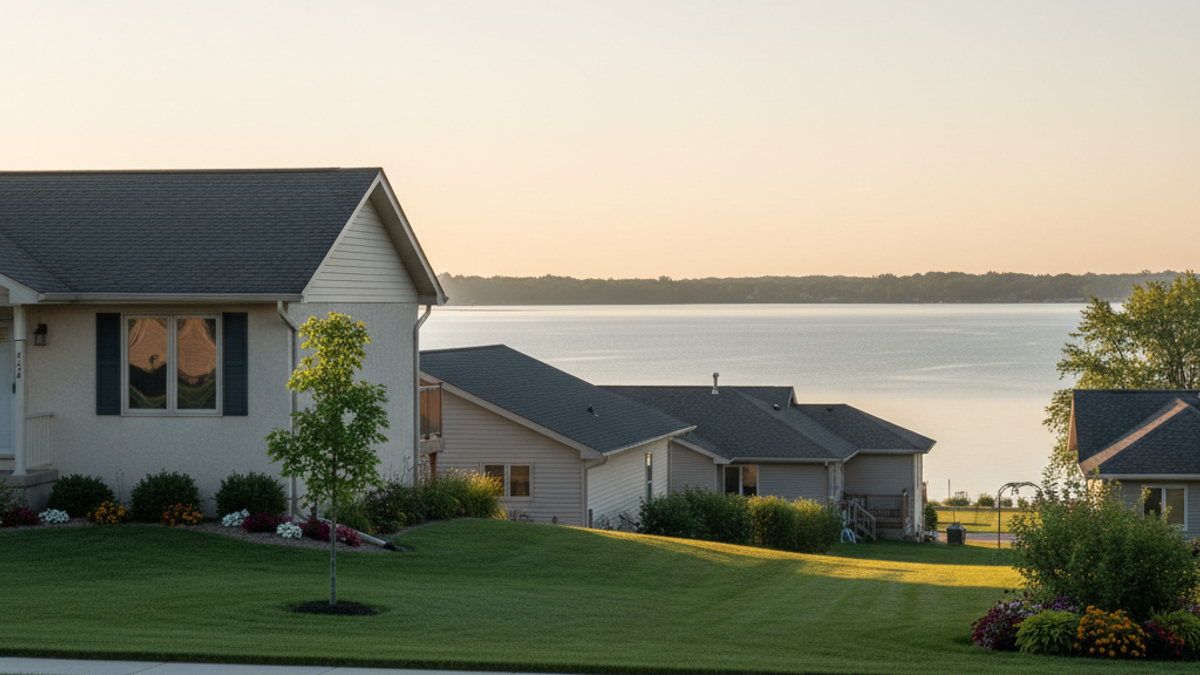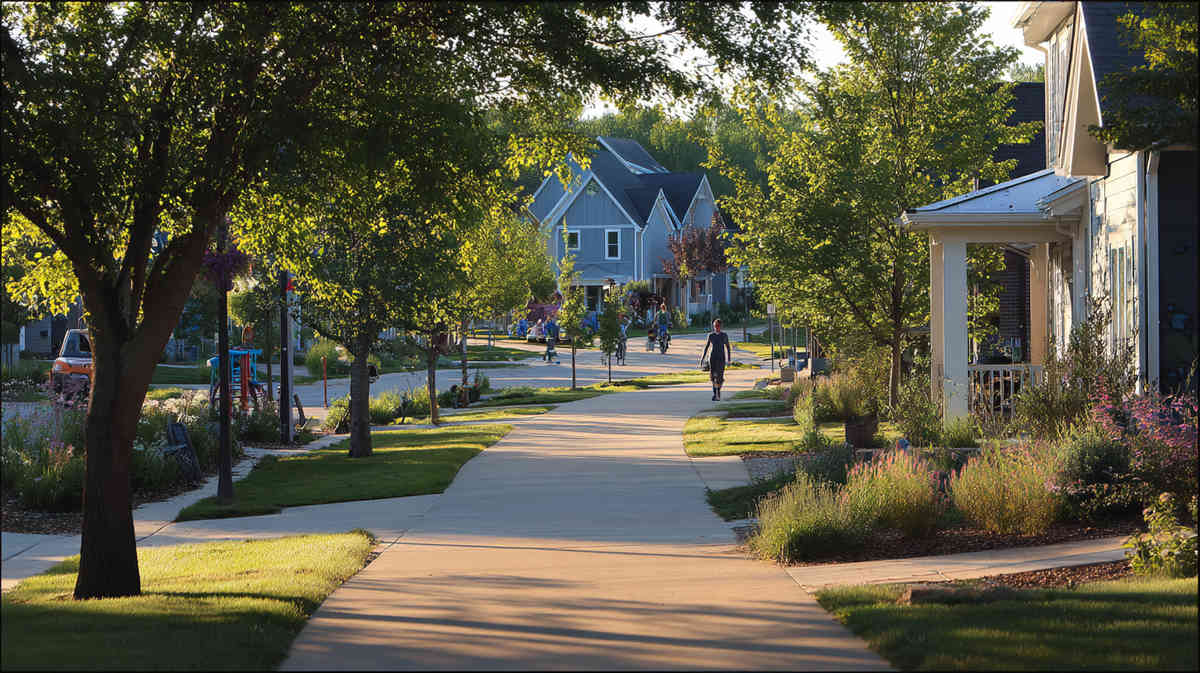You bought the place, painted the walls, maybe planted that oak sapling out back. Now you keep catching yourself scrolling through Zillow, wondering, “Is it too soon to cash out and move on?”
If that sounds familiar, keep reading. You’ll walk away today with a clearer idea of how long you should own a home before selling in Monona, WI—plus a few street-smart tricks the data geeks hardly ever mention.
What’s Really Going On in Monona Right Now?
Monona is tiny on the map, yet its property scene is getting louder by the month. Take a quick stroll along Winnequah Road and count the yard signs. They flip from “Coming Soon” to “Accepted Offer” in what feels like one breath.
Why the rush?
- Demand sits higher than usual. Buyers love Monona’s lake access and double-espresso proximity to downtown Madison. They’re watching every new listing like hawks.
- Supply stays thin. A two-bedroom ranch pops up, twenty showings happen, and boom—offer accepted.
- That imbalance puts most sellers in the driver’s seat, at least for now.
In a stretch like this, even folks who planned to own for a decade start wondering if three to five years might be enough. The gut check: “Will I leave money on the table by selling too early?”
Interest rates add another wrinkle. Early 2025 mortgages hover in the high fives to low sixes. Not dirt-cheap, not sky-high. Buyers can still stomach the monthly payment, which keeps bids relatively strong. If the Fed loosens or tightens later this year, the feel of the market will shift in a snap. Timing starts mattering… a lot.
The Sweet Spot: Why Three to Five Years Often Works
Ask ten agents, get twelve answers. Still, a three-to-five-year holding period pops up again and again for Monona. Here’s why that range gets respect:
- Appreciation stacks up quickly here. Over the past decade Monona home values rose roughly seven percent each year on average. Three years of that can bump your value about 22 percent_, five years roughly 40 percent_, compounding in action. That gain typically wipes out closing costs and nets a solid profit.
- Mortgage amortization begins to nibble away at your principal during years three through five. You owe less, so you keep more at the closing table.
- Capital gains rules smile on you after two full years of primary residence ownership. We’ll unpack that money bit in a minute.
- Maintenance hasn’t snowballed yet. Roof still good, furnace still under warranty, driveway not cracked like a puzzle. The longer you hang on, the pricier those big-ticket items get.
*Yeah, averages hide the messy reality of individual streets and property types. Take the numbers as a compass, not gospel.
Could you wait ten years and maybe squeeze out another forty percent? Sure. Just know the crystal ball gets cloudy that far out. Local employers relocate, zoning shifts, flood maps redraw—stuff happens.
The Variables That Move the Needle
1. Appreciation Pace On Your Block
Big picture stats are helpful, yet real value growth is hyper-local. A lake-view bungalow off Winnequah earns fatter yearly gains than a rambler abutting the Beltline noise wall. Pull three recent sales within two blocks of your address. Compare what they closed for versus what they sold for three to five years prior. That homegrown data tells you if you’re swimming in fast currents or calm water.
2. Rising Upkeep Costs
Home ownership follows the “pay me now or pay me later” principle. HVAC systems in Monona average twelve to fifteen winters before they scream for replacement. Asphalt roofs shrug off about twenty. If any high-cost component is aging out in the next two years, selling sooner spares you the outlay.
Quick checklist:
- Roof older than fifteen?
- Furnace creeping past ten?
- Original windows?
If you checked two or more, cost curves start looking ugly by year six or seven. That alone can push the sell-date closer.
3. Tax Math: The Two-Year Residency Test
Sell after living in your Monona house for twenty-four full months, and the IRS lets you pocket up to $250K of profit tax-free if you file single, double that if you file joint. Sell a day earlier, and you may owe capital gains on every buck. That rule alone dissuades most people from flipping at month eighteen.
One caveat: the calendar matters, not just years. Buyer closes on January 3rd? Make sure you moved in on or before January 3rd two years back. Miss by a week, and the tax hit stings.
4. Mortgage Payoff Curve
Early payments are interest heavy. By year three, the principal portion starts to bulk up. Hit year five and suddenly you’re lopping off real chunks of debt each month. Pull your amortization schedule; you’ll see the turning point. Selling five years in means more equity, fewer thousands going to the bank at closing.
5. Migration Flow
Madison’s tech and bio-health corridors lure new professionals every season. When hiring surges, Monona fills up fast. Should that job wave slow, demand can cool. Watch headline announcements from Epic, Exact Sciences, and the UW system. They quietly tilt Monona’s market temperature.
The Price of Jumping the Gun
Still tempted to bail at month sixteen? Let’s count the ways that move can backfire.
- Capital gains tax may swallow 15 to 20 percent of your profit.
- Closing costs—commissions, title fees, transfer tax—eat another six to eight percent.
- You likely haven’t shaved much principal off the mortgage, so your net falls again.
- If you took out a low-down-payment loan, private mortgage insurance might still cling on. You pay to terminate that policy at closing.
- Short holding periods look dicey to future lenders. They wonder if you chase quick profit rather than stable residency, which can kink your next mortgage approval.
Stack those slices and the pie left for you feels thin.
Timing Plays for Bigger Paydays
Let’s say you’ve crossed the two-year tax line and your roof still behaves. Now the game is market timing.
- Sell during peak listing season. In Monona that’s late March through mid-June. Kids still in school, snow mostly gone, lake views sparkle. Buyers hustle to lock a home before summer starts.
- Watch rate dips. If the thirty-year fixed drops even half a point, buyers’ budgets jump five to ten percent overnight. List right then, and you might snag a bidding war.
- Track inventory counts. Dane County publishes weekly numbers. When active listings dip below 2.5 months of supply, sellers call the shots. Anything over four months and buyers get picky.
- Listen for major employer announcements. Epic adding a thousand jobs? That noise you hear is out-of-state recruiters booking flights.
Remember: you don’t have to nail the absolute top of the market. Get within shouting distance, and you’ll walk away smiling.
Prepping the House Without Over-Prepping
A decade of HGTV can convince anyone that only quartz waterfalls and barn-door pantries move houses. Relax. Buyers in Monona care more about new mechanicals and updated windows than trending fixtures.
Here’s the no-overthink checklist:
- Deep clean until baseboards look fresh-out-of-the-box.
- Touch-up paint in a warm neutral. Think “soft almond,” not stark hospital white.
- Swap burned-out bulbs for daylight LEDs. It makes rooms photograph bigger.
- Fix the obvious stuff: dripping faucet, squeaky door, cracked outlet plate.
- Add a pop of curb love—fresh mulch, tidy edging, seasonal planters.
Budget under two thousand, raise sale price five to twelve thousand. Works like a charm.
Quick Snapshot: How Long Should You Own Before Selling? Monona Edition
Three years
You clear the worst of the mortgage interest slog.
You capture roughly twenty-plus percent appreciation on average.
You pass the IRS two-year rule.
Five years
You add another wave of equity without major repair headaches.
Principal paydown really picks up.
Market cycles often swing in five-year arcs, giving you a decent shot at selling into an uptrend.
Seven years and beyond
You squeeze the last juice out of appreciation, but big systems start failing.
Any market dip between years five and seven could erase some gains.
No crystal ball, of course. The ideal landing spot looks like year four-and-a-half to six for many Monona owners. Anything earlier usually means lost profit. Anything longer invites the furnace to quit.
Real-World Mini Case Studies
- The Young Family on Outlook Avenue
Bought a three-bed colonial in 2020 for $420K. Sold this spring for $565K, year four of ownership. Walked with roughly $110K after fees and zero federal tax owed. They escaped right before replacing a near-dead air conditioner. - The Downsizer on Tonyawatha Trail
Purchased a lakefront ranch back in 2011. Considered selling in 2015 but stayed put until 2024 after remodeling the kitchen for $80K. Sold for $1.25 M. Net appreciation covered remodel twice over, yet they replaced roof and seawall during that tenure. Their accountant pegged actual net around $600K after repairs, taxes, and fees. Holding longer paid but came with maintenance stress. - The Flipper Gone Wrong off Nichols Road
Bought in 2023, planning a cosmetic flip. Over-improved with high-end tile and custom cabinets. Listed nine months later for $90K above purchase plus improvements. Sat for sixty days, finally sold at break-even thanks to capital gains tax and agent commissions. Less than one-year holds almost never fly in Monona unless you snagged an off-market deal.
Gut Check: Ask Yourself These Six Questions
- Have you owned at least two years to dodge capital gains?
- Did nearby sales climb at least fifteen percent since you bought?
- Is your furnace younger than twelve?
- Will another promotion or family change push you to move within three years anyway?
- Could a small cosmetic refresh raise value quickly?
- Is the broader economy still leaning toward sellers, not buyers?
Four yes answers? Lean toward listing. Three or fewer? You might gain by waiting a bit longer.
Action Steps to Lock Your Decision
- Pull your mortgage statement, grab the payoff amount, and calculate equity.
- Contact a local agent for a comparative market analysis. Make sure they base it on closed sales from the last ninety days within half a mile.
- Get quotes for any looming major repairs—roof, HVAC, windows. Add them up.
- Open a tax software or talk to your CPA about capital gains exposure.
- Decide on a target net figure that would make moving worth the hassle. Keep it realistic.
- If the numbers align, interview two agents, pick one, and map out a sixty-day prep calendar.
Ready to Weigh Your Options?
Owning in Monona feels like holding a winning lottery ticket some years. The secret is knowing when to cash it. Most homeowners who stay a minimum of three years and cap it at around five to six walk into closing with the happiest wallets and the least stress. Selling too soon chips away at profit through taxes and fees. Hanging on forever invites costly repairs and the possibility of a cooler market.
You don’t need to guess. Plug in your specifics, track local indicators, and lean on an agent who lives and breathes Monona zip codes. Do that, and you’ll time your exit with more swagger and fewer what-ifs.
Got follow-up questions or itching for that market analysis? Reach out. Let’s put real numbers on the page and see if the moment is right for you.













